#spec bio
Text
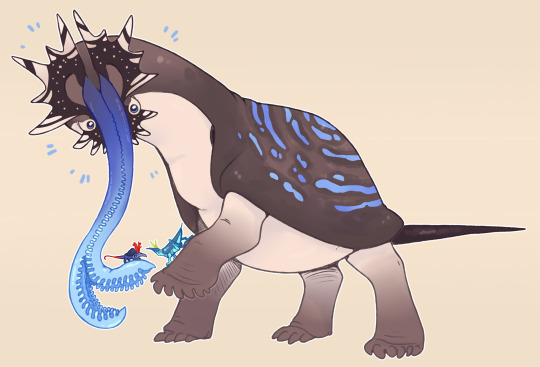
NEW ALIEN AGAIN! This one I wanted to stick to being more Earth inspired, connecting with my roots. I'm calling 'em Styraphants cause they're mostly a mix of styracosaurus, elephant, and mollusk of course. Trying to make a quad walking sophont always lends to kind of a centaur-ish body plan, so tried to think outside the box for appendages this go around. They've got a pair of trunk tentacles around their mouth that they use as their hands, which have a fleshy 'zipper' to slot together at rest. They also smell/taste with them so gloves are a very popular purchase.

Oh also! Their eyes are on little stalks that peak out around their frill, they can hide them away if scared. Also all the fellas pictured here are gals! They have a male/female system in keeping with the Earthling megafauna theme.
#art#worldbuilding#speculative biology#spec bio#styraphant#alien#xenobiology#fleshing out existing critters<makin new ones#it is a curse
272 notes
·
View notes
Text
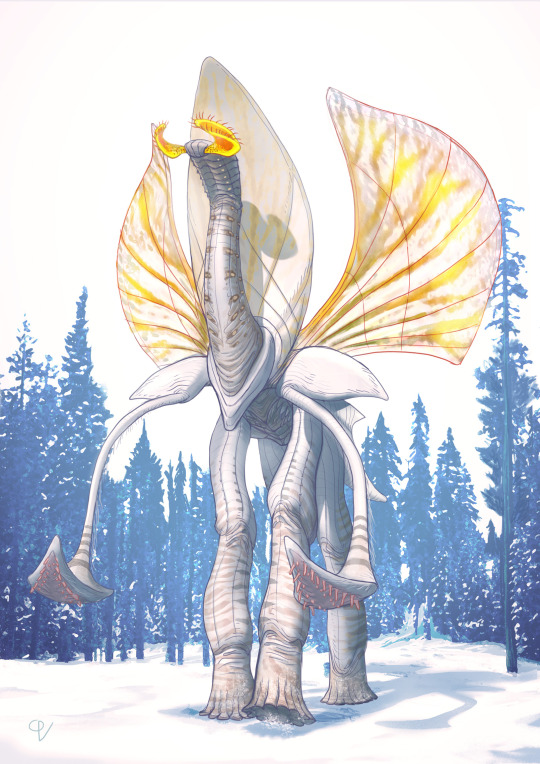
Here's my entry for the spectacular #Refugium2024 contest, arranged by @simon-roy on the occasion of his comic Kickstarter!
Because there were five different clades to choose from, I ultimately picked the photosynthetic "pentaped". It wasn't my first choice, though, as I love the idea of the crustacean-like "skilloids", but the five-legged plant animals seemed like they could be a hell of a challenge.
So here is the Helioceros (aka Cherubic Pentaped), an alpine species that stores and uses sunlight as an energy source and for displaying behavior.
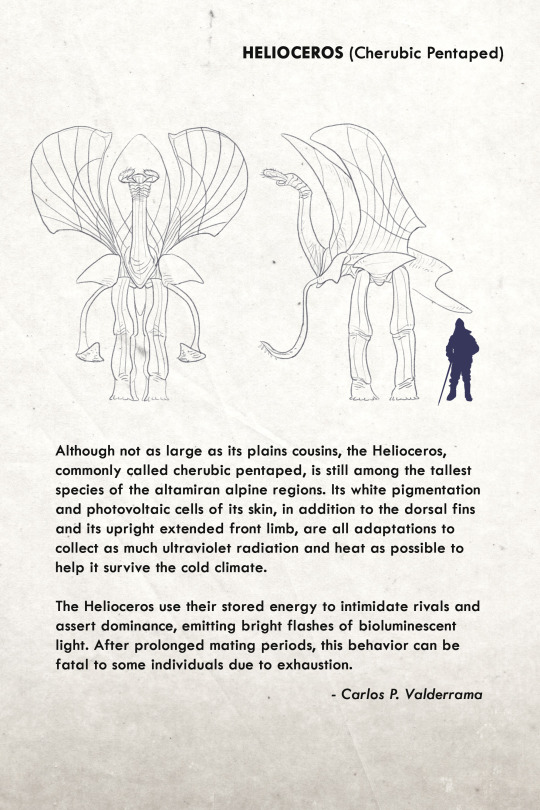
Hope you like it!
And hey, do not forget to support the Refugium comic! Not every day do we come across projects as cool as this!
136 notes
·
View notes
Text
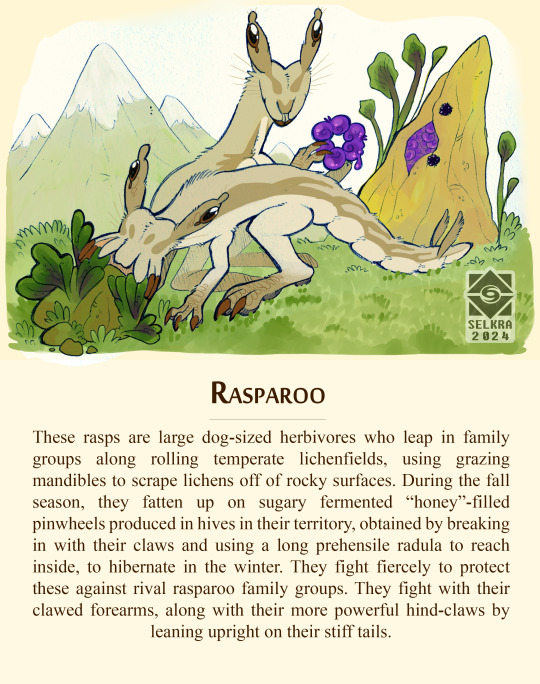

Cutting it close, but here's my entries for the Refugium Creature Design Contest! @simon-roy
The rasparoos are large dog-sized herbivores who leap in family groups along rolling temperate lichenfields, using grazing mandibles to scrape lichens off of rocky surfaces. During the fall season, they fatten up on sugary fermented “honey”-filled pinwheels produced in hives in their territory, obtained by breaking in with their claws and using a long prehensile radula to reach inside, to hibernate in the winter. They fight fiercely to protect these against rival rasparoo family groups. They fight with their clawed forearms, along with their more powerful hind-claws by leaning upright on their stiff tails.
Honey rings are social pinewheels that live in nests as colonies in temperate lichenfields. Their caste system includes workers, the smaller motile form who go out of the colony to collect vegetable matter during warmer seasons to ferment in their stomach acids and store as “honey” in the hive for the snowy seasons. The other caste are the reservoirs, who are blind, sessile and much larger than workers, with characteristic spiral body cavities to store a maximum amount of “honey”. Some of it seeps out of their bodies to stick with one another securely in the hive, aided by their gripping legs clinging to the walls of the hive.
I had a lot of fun with these guys! You can see concept sketches here because I think they're fun.
#refugium2024#selkra scribbles#my art#speculative biology#spec bio#speculative zoology#astrobiology#xenobiology#alien design#alien#artists on tumblr
62 notes
·
View notes
Text

I've included one of my own critters here- a small heat-seeking predatory squilloid! BUT MORE IMPORTANTLY, Our alien design contest, #refugium2024 closes tomorrow! If you want a chance to get your own critter into the REFUGIUM Hardcover, post it ASAP!
And if you'd like to pre-order the graphic novel that will include all these critters, take a look here!

#simon roy#comics#griz grobus#habitat#scifi#kickstarter#sciencefiction#speculative biology#miramar#spec bio#specbio#speculative evolution#xenobiology#speculative zoology#spec evo#refugium2024
56 notes
·
View notes
Text
Thought I’d post some art I did for the #refugium2024 of one of my grappler variations. I don’t know much of the world so I went with what felt right.

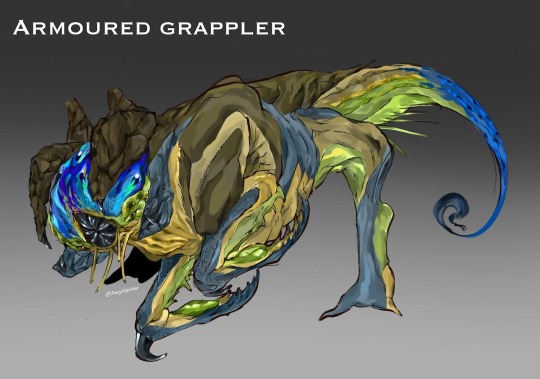
#spec bio#speculative biology#speculative evolution#spec evo#speculative fiction#xenobiology#alien species#artists on tumblr#speculative ecology#speculative worldbuilding
21 notes
·
View notes
Text

My spore creature suited up for an extraterrestrial adventure!
Unrelated but now this one won’t shut up about how it’s a great asset great great asset
#spore#spore 2008#spore creature#speculative biology#spec bio#alien species#mimikosu#my art#I like the spacesuits in lethal company so I wanted to make one for this body plan
21 notes
·
View notes
Text
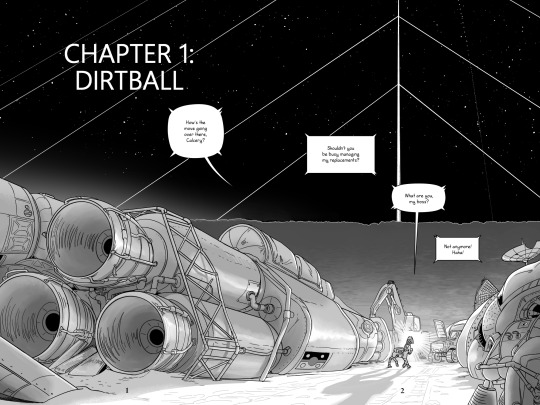


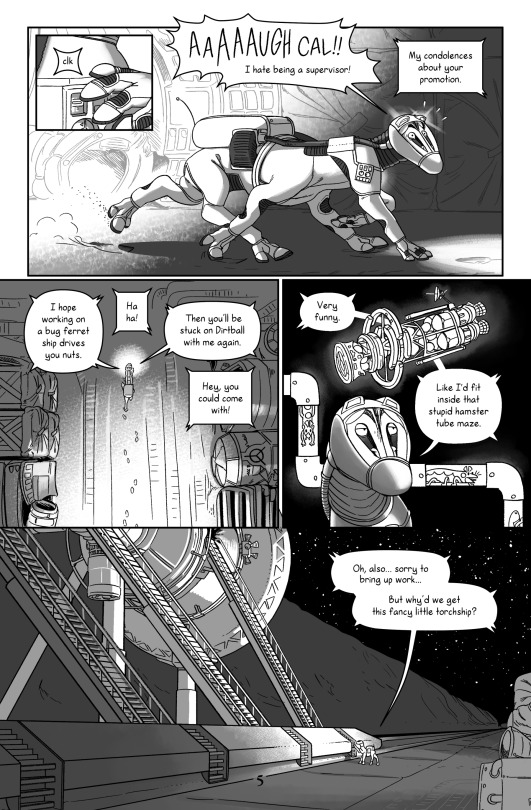
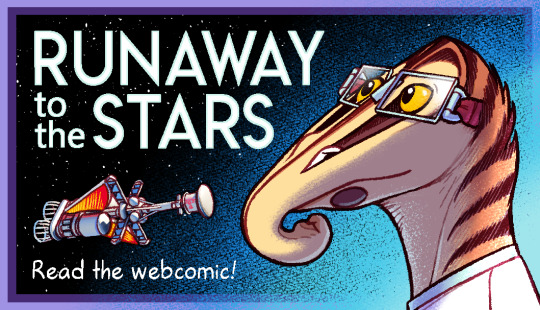
I finally (got help) slapping Wordpress into shape and Runaway to the Stars is now releasing as a public webcomic! Thank you so much for your support over the years, and sticking with me while I'm slowly chewing my way through this book. I'm very excited to share this story! It'll be updating every Tuesday, Thursday, and Saturday thanks to the massive Patreon backlog. Patreon will continue to update as I finish pages, which happens on a sporadic non-schedule.
If you experience bugs with the site report them to me. Some things may occasionally break, as coding problems tend to be a very "whack-a-mole" affair; and I'm still getting used to the interface.
#jayart#comic#webcomic#runaway to the stars#talita#aliens#speculative biology#spec bio#speculative evolution#spec evo#science fiction#scifi#hard scifi#uhhhh i can't think of anymore engagement tags#I'm terrible at advertising things#show your friends! show your dad! show your dog!
7K notes
·
View notes
Text

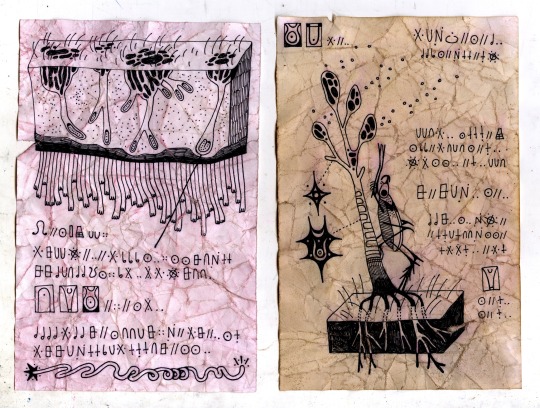

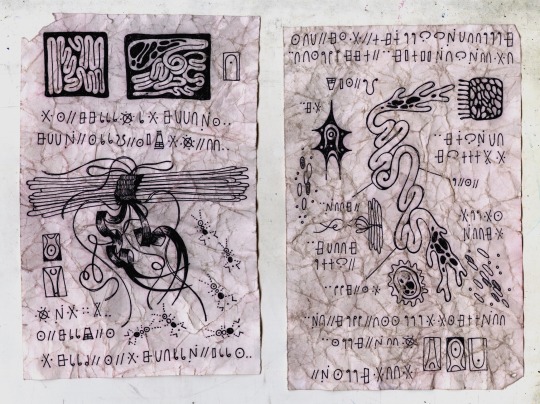
Here’s a small part of a way larger project I’ve been working on (do expect photos of that at some point in the near-ish future).
#art#illustration#drawing#doodle#traditional art#traditional illustration#speculative biology#scientific illustration#spec bio
3K notes
·
View notes
Text

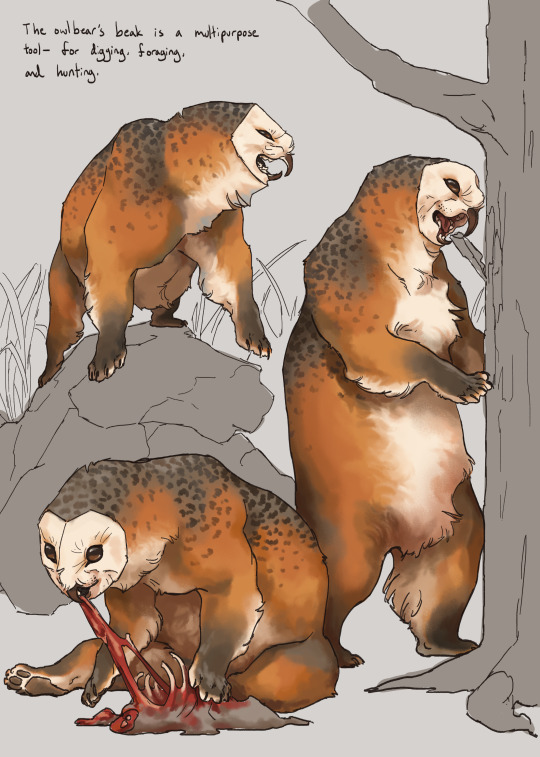

Despite its name, the owlbear is in fact neither owl nor bear - it is a large species of rodent whose external incisors resemble a curved "beak." The enamel of these incisors is colored brown because of iron compounds. This hard substance wears down at a slower rate than the regular tooth, thus producing a sharp edge at the tooth tip.
It is thought that owlbears are evolved from smaller burrowing rodents who made use of their external teeth as digging implements. Their ancestors lacked external pinnae, but the modern owlbear's fur grows in an owl-like facial disk to direct sound -- a case of convergent evolution.
Or, what if dnd owlbears were just big mole rats.
#dnd#creature design#speculative biology#no idea if a facial disk would actually be realistic for mammals dont come at me ok#my art#spec bio
18K notes
·
View notes
Text
NEW ALIEN

I call them Ocira. They're a sort of combination of seals and octopus. They're eusocial and very kind
That wrinkly thing on their chest are their gills, which they can use to express certain emotions.
Their "teeth" are truly spines that can be raised to eat meat, or flattened to chomp plants.
To communicate, they do a sort of drumming and pinching of their swim bladders for different tones and squeaks.
They live on an ocean planet, in shallow, warm waters around reefs.
I might draw them more and tell more about them 😸
#art#digital art#orcatnip#xenobiology#spec bio#speculative biology#alien oc#meow#original creature#creature design#sophont
2K notes
·
View notes
Text

Didn't think I'd have the time but got my entry for the refugium creature contest done! Down to the wire as usual. More info on the life cycle found below!
I wanted to do a fun Squilloid line, but as fun belly worms! The life cycle is the host eats the eggs which hatch inside the digestive tract, once there the young attack each other and any other parasites they find. They 'eat' through absorption through their tails so their mouth parts are only for clearing out their living space, as a result most hosts generally feel a lot better once they are infected. The fools!
Once the role of top worm has been decided, the individuals morphs into the feeding stage of their lifecycle. Their tail sprouts a multitude of fringes to aid in absorbing food and gas exchange, while the mouth parts remain for dealing with any would be room mates! This stage of their life is by far the longest, lasting decades.
The burrowing phase is where the fun begins, this sub adult form can be brought about by age, stress, or most commonly lack of space within the host. In this phase they begin swelling grotesquely and once they reach maximum size, turn their mouth upon their host. They chew their way out to the surface, sometimes resulting in death, sometimes not! But they only stop once they are able to smell open air and then settle in to begin their final metamorphosis.
The dispersal phase adults only live for a few days, climbing out of the wound created in their host to fly off and find suitable places to lay their eggs. If their host died during the last phase they will generally lay their eggs onto the body, but some are always out looking to lay a trap for the next poor unsuspecting creature.
Hope you enjoy! There are so many fun entries, def go check them out!
#theyre like if a tapeworm was also a fig wasp#refugium2024#art#speculative biology#spec bio#Squilloid#you KNOW i had to make on that was disgusting
190 notes
·
View notes
Note
if youre still taking requests - Draw a cool species youve seen in the spec bio community mayhaps?

Enamoured by @sparrowlucero's space whales
#they're so fun#i love their gnarly teeth and fins. sick as hell#doodle requests#my art#art#spec bio#speculative biology#alien#spec evo#sketch
2K notes
·
View notes
Text


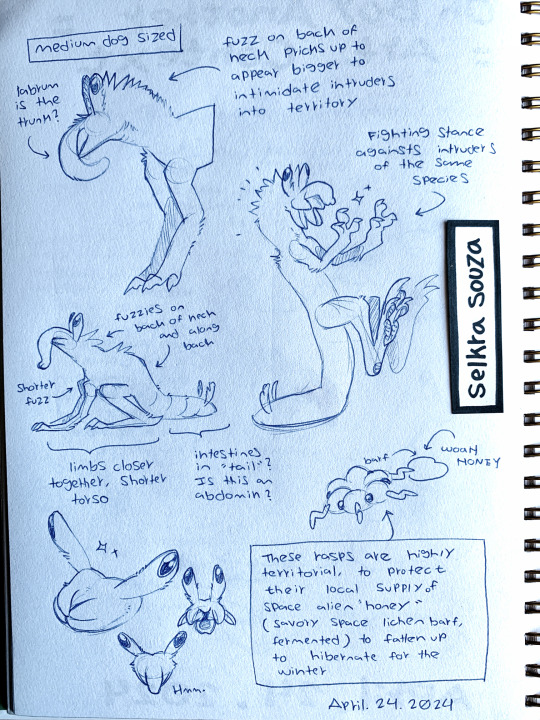
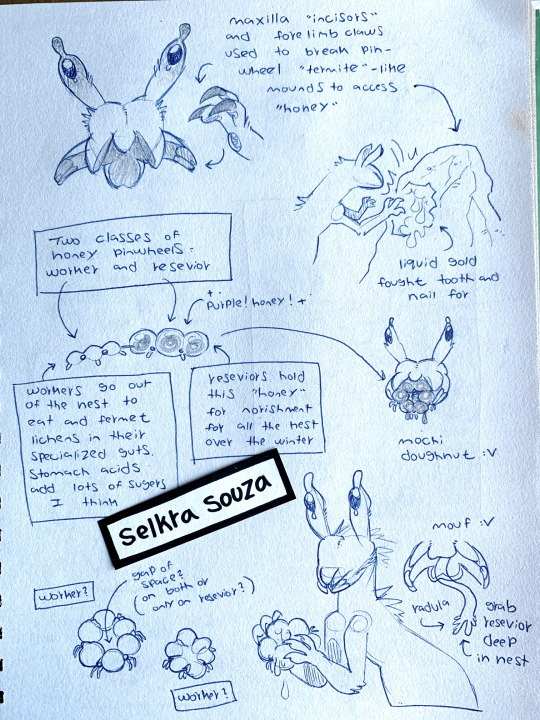
Concept sketches for my Refugium creature design contest entry because they're kind of funny.
25 notes
·
View notes
Text
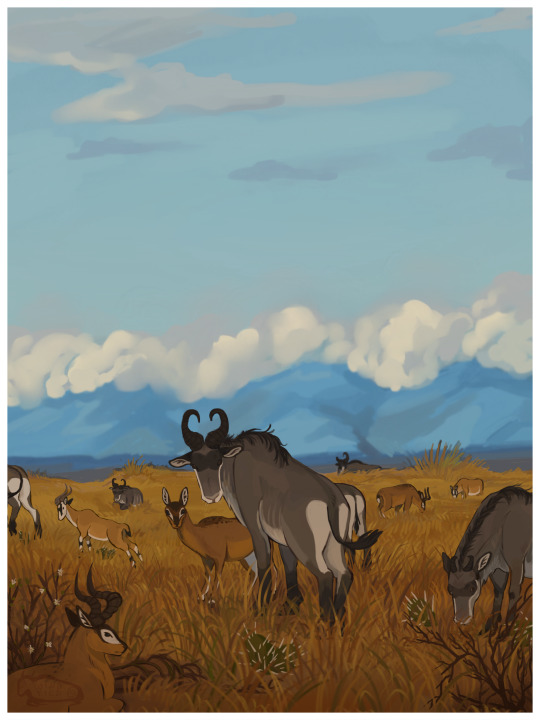
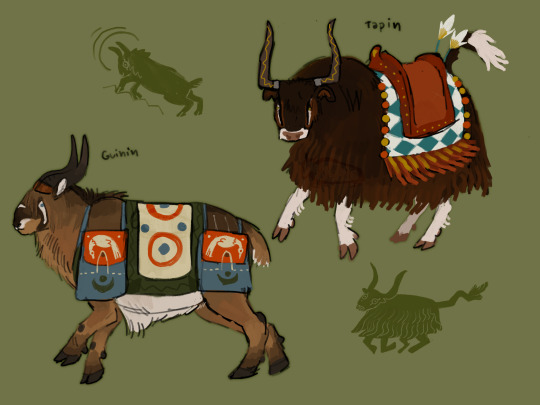
Some bovids of Lishel.
The western savanna is home to Keerso, Vans impala and, Tapper impalas. Keerso are one of the most populous animals in the area, leading to herds being domesticated for meat. Vans impala are seen as blessed animals, and killing them is looked down on.
The mountainous eastern coast is home Guinin, and Tapin. Both have been domesticated, wild populations still exist naturally. Guinin are often used in hauling due to their hefty builds. Tapin are fast, and sure footed. They can jump along tough terrain with ease and are often used for general transport. These species as historically important to the area.
#sokiin#illustration#worldbuilding#original species#speculative biology#concept art#spec bio#speculative zoology#spec evo#speculative evolution#bovidae#painting#ungulates
1K notes
·
View notes
Text
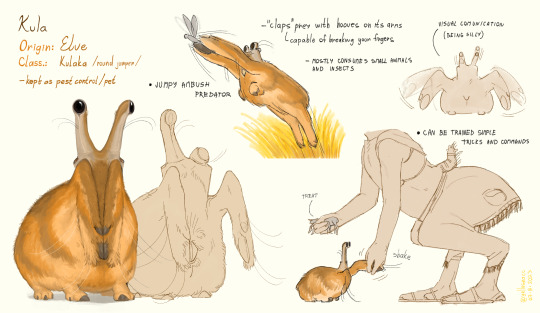
Kula!
A popular domesticated animal of slomen.
Kula are adapted for grassy areas with lots of small prey. In the wild, they either jump after flying or jumping prey or wait at burrows before smashing their prey with their hooves. If the smash isn't enough they hold it to their beak and finish it. Some species are more specialized to wait while others to jump. The domesticated Kula is speculated to be one of the more energetic hunters, mostly interested in 'insects'.
In ancient times wild Kula were attracted to sloman settlements as they would also attract prey with the slomans' food and light.
The slomen would soon learn that Kula were not pests since the wild animals were yet to be spoiled by premium meat cuts and preferred fresh moving meat that the slomen didn't want around.
In current times many cultures keep these animals as pest control on farms and in larger houses. They can be commonly seen in underground rooms that serve as food storage but for a healthy mental state, they need time on the sun.
While in the wild they are usually solitary or in small groups, Kula have a complex body language that they use to express their mood and/or needs. This can be very cute and funny, helping them become as loved as they are.
Many owners will grow to care deeply for their Kula but some cultures recognize them directly as pets. In the high-ranking societies of these cultures, pet Kula get even rounder. Often a certain trait is popular in a culture, resulting in localised breeds with different shapes and colors.

Some little goober possibilities - not entirely canon
In a few places, Kula are also part of a religion and have their own shrines.
#art#speculative biology#artists on tumblr#digital art#artwork#worldbuilding#speculative evolution#fantasy#spec bio#original alien species#original species#spec evo#speculative zoology#xenobiology#domesticated animals#slomen
2K notes
·
View notes
